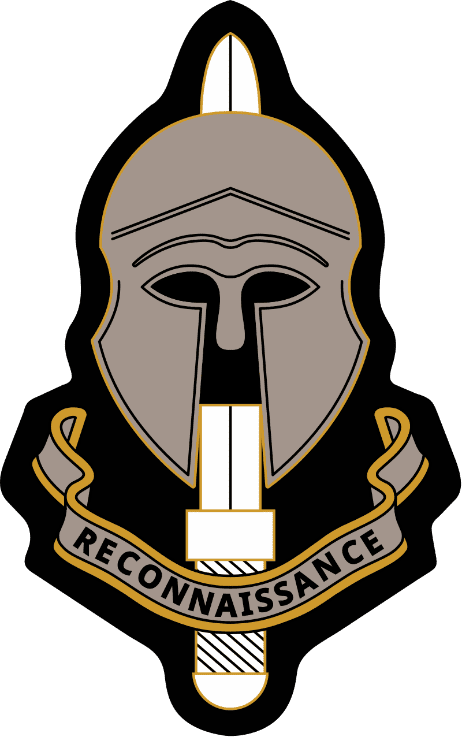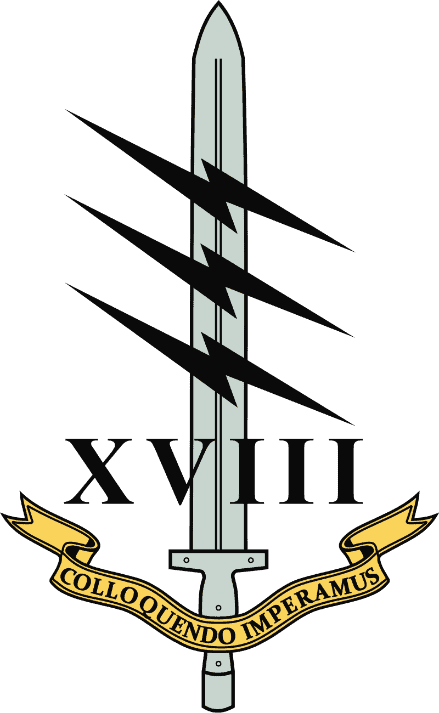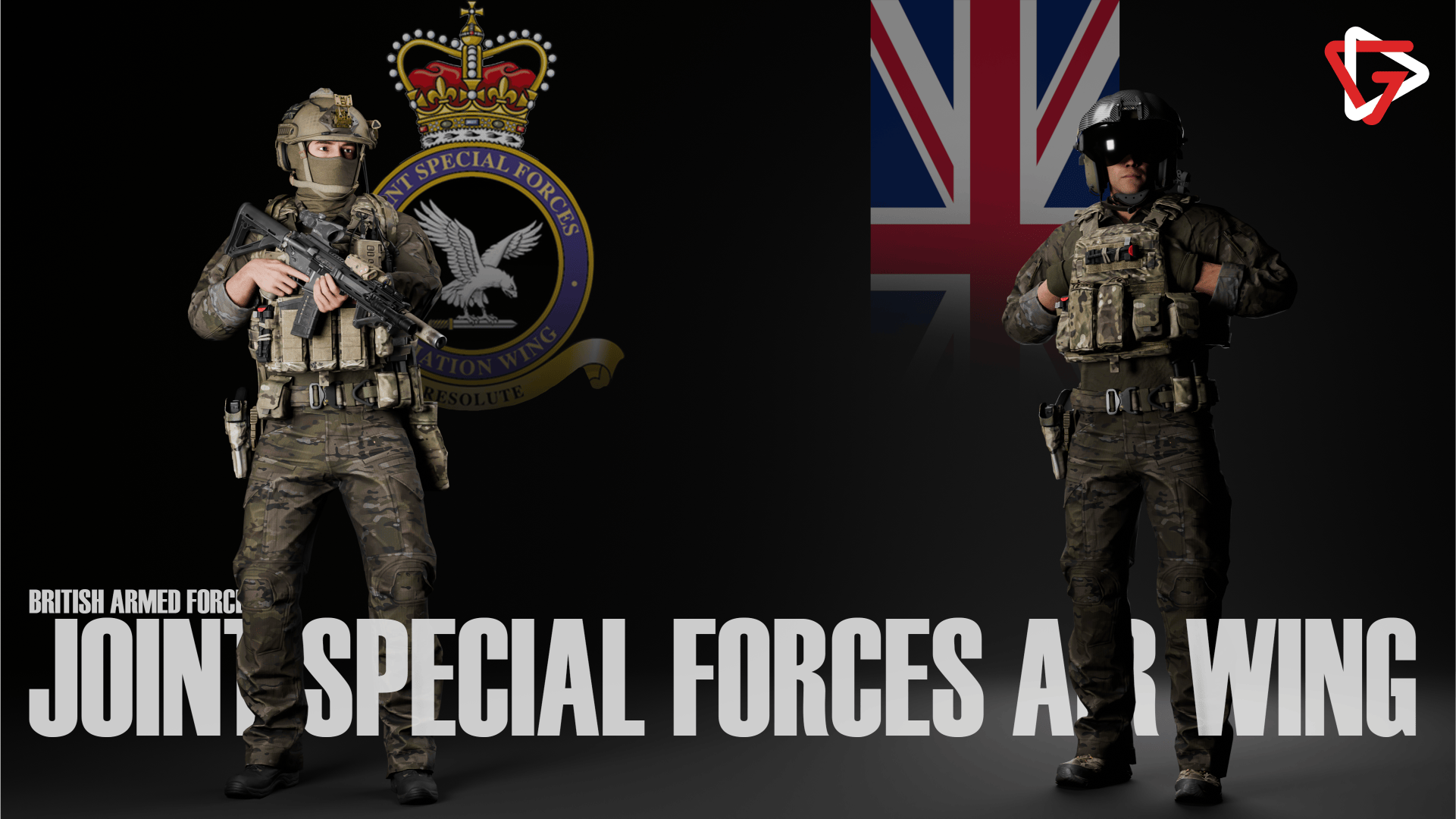1.0 Introduction
After the Second World War, the British Government realised the need for small, highly capable special forces units that could be deployed anywhere in the world. The response was the creation of the Special Air Service (SAS) and Special Boat Service (SBS). Following this, in 1987, the UK created a new Directorate, the United Kingdom Special Forces (UKSF), which unified its existing forces.
A decade later, in the context of the Global War on Terrorism (GWOT), the UK was forced to strengthen its Special Forces (SF), creating and adding new units to the Directorate. These “Tier 1” units are tasked with carrying out the most dangerous and demanding missions, as well as supporting other forces. While, also closely collaborating with the UK Intelligence community. at home with MI5 and abroad with MI6, DI and GCHQ.
The UKSF is the British equivalent of the US JSOC (Joint Special Operations Command) and SOCOM (Special Operations Command).

2.0 UKSF History
2.1 Second World War
Today’s Special Forces have their origins in the commando units such as the Special Operations Executive (SOE) created during World War II. These Commandos, also known as British Commandos, were formed in June 1940, after the fall of France, following a request from Winston Churchill. The idea was to create special forces that could carry out raids against German-occupied Europe (source). Therefore, the British established this small but well-trained and highly mobile assault and reconnaissance force.
It was inspired by the mobile commandos of the Boer War (1899-1902). Initially, the Commandos were recruited from within the British Army from volunteer soldiers of the Special Services Brigade. In time, the ranks of the Commandos would be supplemented by members from all branches of the British Armed Forces and some foreign volunteers from German-occupied countries. After the war ended, the War Office concluded that they were no longer needed and disbanded most of the units.

However, British policymakers would soon want specialised units in the post-war Era. The growth of nationalist and communist insurgencies in British colonies and elsewhere created a military context that sometimes required small, specialised units rather than large conventional forces. Consequently, in the late 40s and early 50s, the MoD established several Special Forces units such as the SAS and the SBS. Over time, these units evolved to adapt to the various threats against British interests (source; source; source).
2.2 Post-Second World War
After the Second World War, British SF, such as the SAS and SBS have been deployed in numerous conflicts and theatres of war. The 21 SAS deployed during the Korean War and in Malaya (source). The 22 SAS also participated in reconnaissance patrols and large-scale assault missions in the Jebel Akhdar War in Oman. They also conducted covert reconnaissance, surveillance patrols, and some large-scale assault missions in Borneo (source).
They have also participated in operations in the Aden Emergency, Northern Ireland, The Gambia and The Falklands among others. The 22nd SAS also participated in the Serbian campaign and pursued war criminals in Bosnia. They also participated in the Kosovo War by assisting KLA guerrillas (source).
The SBS also served in the Korean War. They were deployed in operations along the North Korean coast and operating behind enemy lines, destroying lines of communication and facilities and gathering intelligence. In 1952, SBS teams were combat-ready in Egypt. This was a contingent plan in case Gamal Abdel Nasser’s revolution became more violent than it was (source).
In 1961, SBS teams conducted reconnaissance missions during the Indonesian Confrontation. That same year, Iraq threatened to invade Kuwait for the first time, and the SBS stationed a detachment in Bahrain. The SBS were deployed during the Falkland War and conducted operations in Northern Ireland during the Troubles (source).

2.3 The UKSF
The role of British special forces has transformed over the years. They went from defeating Hitler and fighting insurgencies to their current task, fighting the global war on terror. Over the past two decades, the UKSF has cooperated closely with the US Joint Special Operations Command (JSOC) in building a powerful counter-terrorist force (source).
The current UKSF came into being in 1987 when the post of Director of the Special Air Service (SAS) became Director of Special Forces (DSF). The UKSF was born when the MoD assigned the DSF control of both the SAS and the Navy’s Special Boat Squadron, which was renamed the Special Boat Service (SBS).
Since then, the directorate has expanded with the creation of units like the Joint Special Forces Aviation Wing (JSFAW) in 2001. This unit specialises in covert battlefield insertion and extraction. JSFAW was formed by unifying the 7th Squadron (RAF) and the 658th Squadron (Army Air Corps). In 2005, the Special Reconnaissance Regiment (SRR) was created to support the SAS, alongside the 18th Signal Regiment.
In 2006, the Directorate created the Special Forces Support Group (SFSG) which serves as a quick-reaction force to assist Special Forces missions. SFSG roles might include large supporting offensives, blocking enemy counter-attacks or guarding areas of operation (source).

2.4 The War of the 21st Century
These new British Special Forces regiments are designed to help in “the long war”. The war on terror required even smaller, well-trained, and well-supported units that operate on battlefields where combat lines are poorly defined and enemies mix among civilians. Special forces can act as “force multipliers”.
This is because small teams of operators can achieve results comparable to those of larger forces. The incorporation of new special forces such as the SRR and the SFSG, in addition to reinforcing existing units such as the SAS and the SBS, was the UK’s effort to create a force suited for the asymmetric war of the early 21st century (source; source).
Although the figures are classified, the UKSF likely has at least 2,000 personnel. The UKSF also have dozens of specialised vehicles and aircraft (source).
3.0 UKSF Purpose
The purpose of the UKSF remains broadly as it was in the 1940s. This is surveillance and reconnaissance, support and influence, and offensive action against high-value targets. Much of the surveillance and reconnaissance function now falls to the SRR.
SRR’s activities free up 22 SAS, the SBS, and the Support Group to focus on offensive action alongside influence and support. This involves, among other activities, waging war in enemy-controlled areas in cooperation with local forces and British and allied air power. This can be either as a covert substitute for deploying the conventional Army or to facilitate their arrival.
Aside from these traditional tasks, the role of British SF today focuses on waging the global war on terrorism. Nowadays, the UKSF is growing more equipped for irregular and asymmetrical combat. They have become proficient in navigating battlefields with ambiguous frontlines and functioning as effective ‘force multipliers’ (source; source).
4.0 UKSF Organisation
The UKSF Directorate manages the assigned joint capabilities of the three-armed services. It is commanded by the Director of Special Forces (DSF), a senior role within the Ministry of Defence (MoD). The UKSF reports to the so-called Strategic Command (StratCom), formerly known as Joint Forces Command (JFC). They are governed by the Permanent Joint Headquarters (PJHQ) which are located at Northwood Headquarters (source).
4.1 Special Forces vs Elite Forces
Apart from the special units, the British Armed Forces also have elite units. While some of these elite units such as the Parachute Regiment or the Royal Marines Commandos provide operators to the UKSF, they are not part of the UKSF (source; source).
4.2 Special Forces vs Capable Forces
The British MoD is also in the process of creating special operations capable forces that will carry out special operations to train, advise and accompany forces from the UK’s partner countries in high-threat environments. These forces, however, will also not be part of the UKSF. An example is the formation of the Ranger Regiment in 2021 within a new brigade, the Army Special Operations Brigade (SOB), established that same year. This brigade will take on some tasks traditionally performed by special forces and work with partner forces (source; source)
The Royal Navy is also transitioning the Royal Marines through the Future Commando Force (FCF) concept. This will adapt their role from a standby amphibious infantry to a versatile force with special operations capability (source; source).

4.3 UKSF Units
The UKSF, belonging to different branches of the British Armed Forces, consists of the following units and their respective reserves (source; source):

4.3.1 Royal Navy
- Special Boat Service (SBS)
- C Squadron
- M Squadron
- X Squadron
- Z Squadron
- Special Boat Service (Reserve)

The SBS is the maritime special forces unit of the UKSF. Is mainly tasked with maritime counter-terrorism. Is described as the sister unit of the British Army 22 Special Air Service Regiment (22 SAS). The majority of SBS operators come from the Royal Marines Commandos. Its headquarters (HQ) are located in RM Poole, Dorset, England.

4.3.2 British Army
- Special Air Service (SAS)
- 22 Special Air Service Regiment or 22 SAS
- A Squadron
- B Squadron
- D Squadron
- G Squadron
- L Detachment (SAS Reserve)
- 21 Special Air Service Regiment or 21 SAS(R): Reserve unit.
- A Squadron
- C Squadron
- E Squadron
- 23 Special Air Service Regiment or 23 SAS(R): Reserve unit.
- B Squadron
- D Squadron
- G Squadron
- 22 Special Air Service Regiment or 22 SAS

The SAS specialises in many roles including counter-terrorism, hostage rescue, direct action and covert reconnaissance. Its sister unit is the Royal Navy’s Special Boat Service (SBS) which specialises in maritime counter-terrorism. Most SAS operators come from the Royal Marines or the Parachute Regiment. The SAS regional HQ (RHQ) is located in Stirling Lines, Herefordshire, England. The HQ of the 21 SAS is located in Regent’s Park Barracks, London, England. The 22 SAS HQ is also located in Stirling Lines, Herefordshire, England. The HQ of the 23 SAS is located in Birmingham, West Midlands, England.


The SRR is the special reconnaissance unit of the UKSF. The regiment conducts a wide range of classified activities related to covert surveillance and reconnaissance. The SRR draws its personnel from existing units and can recruit male and female volunteers from any branch of the British Armed Forces. Its HQ is located in Stirling Lines, Hereford, England.

4.3.3 Royal Air Force
- Special Forces Flight (47 Squadron): Disbanded and inactive since September 2023.

The 47 Squadron is an inactive squadron of the Royal Air Force. It provided transport capabilities to the UKSF and was based at RAF Brize Norton, Oxfordshire (England). It operated the Lockheed Martin Hercules C4/C5 between 2013 and 2023.
4.3.4 Joint Service Units
- Special Forces Support Group (SFSG)
- A Company
- B Company
- C Company
- D Company
- F Company
- G Company
- Support Company

The SFSG is a tri-service unit, comprising the 1st Battalion 1st Parachute Regiment (1 PARA), a company of Royal Marine Commandos (F Coy) and a flight (platoon) of the Royal Air Force Regiment. The SFGS offers support to other UKSF units, even having a rotating company group trained in Counter Terrorism (CT) to support the on-call SAS or SBS squadrons on CT rotation. Its HQ is located in MOD St Athan, Wales.

- 18 (UKSF) Signal Regiment
- SBS Signal Squadron
- 264 (SAS) Signal Squadron
- 267 (SRR) Signal Squadron
- 268 (SFSG) Signal Squadron
- 63 (UKSF) Signal Squadron (Reserve)

The 18th Regiment includes signal squadrons from both the Royal Corps of Signals and the Royal Navy. The regiment provides Communications and Information Systems (CIS) support to the UKSF. Its HQ is located in Stirling Lines, Hereford, England.

4.3.5 Joint Special Forces Aviation Wing (JSFAW)

In addition to the units mentioned above, the UKSF includes the Joint Special Forces Aviation Wing (JSFAW). This is a joint service organisation of the Royal Air Force (RAF) and the British Army that coordinates the provision of aviation support to the UKSF. Its HQ is located in RAF Odiham, Hampshire, England. It includes the following units:

- No. 7 Squadron (Royal Air Force). Operates several Boeing Chinook HC6. Its HQ area is also located in RAF Odiham, Hampshire, England.

- No. 658 Squadron (Army Air Corps, British Army). Operates several Eurocopter AS365N3 Dauphin II. It provides dedicated aviation support to the 22 SAS for domestic counter-terrorism (CT) operations. Its HQ is located in Stirling Lines, Hereford, England.

5.0 Notable Operations of UKSF
The SAS and other British special forces have been involved in covert operations in 19 countries in the last decade. Some of these include Nigeria and Mali, Syria, Iraq and Afghanistan, the Philippines, as well as Ukraine. Due to the secret nature of its mission, its activity inside and outside the country is rarely public.

Some of his best-known recent interventions include:
5.1 Iraq
The UKSF deployed as part of the Joint Special Operations Command Task Force (JSOCTF) in the Iraq War. This was a joint American and British special operations unit formed by JSOC and UKSF elements, famously known as Task Force Black/Knight, later renamed Task Force 88. The unit was reported to be responsible for the cross-border raid into Syria from Iraq in October 2008. This action resulted in eight deaths including Abu Ghadiya. They have also operated with the US in the Horn of Africa targeting al-Qaeda (source).

5.2 Afghanistan
During Operation Enduring Freedom, the UKSF also deployed in Afghanistan, as part of the Combined Joint Special Operations Task Force (CJSOTF). The main participant was the SBS, integrated into Task Force Sword (later renamed Task Force 11) under the direct command of JSOC. This unit acted as a “hunter-killer force”, being its primary objective capturing or killing senior leadership and High-value targets within al-Qaeda and the Taliban. C and M squadrons had an extensive role in the invasion of Afghanistan, M being involved in the Battle of Tora Bora (source).
5.3 Other Activities
Special forces took part in the rescue of two dozen British diplomats and their families from Khartoum in April 2023 after the outbreak of fighting in Sudan. Elements of the SAS evacuated the diplomats to an airfield north of the capital when they were at risk of coming under attack (source).
6.0 UKSF Summary
The United Kingdom Special Forces Directorate was born from the need to adapt and respond to modern threats like terrorism, insurgency, and asymmetric warfare. The original mission of the different special forces was to act as a lethal and flexible force on the battlefield, but it has evolved over the decades. Today, the Directorate acts as the general command of the most elite units of the British Armed Forces. UKSF also serves to support and integrate these units, allowing for better cohesion and devastating capabilities on the battlefield. Capable of planning and carrying out joint and multinational operations, the UKSF has become an essential tool for the British Armed Forces. In an increasingly hostile world, and given the continuing need to respond to threats, they are likely to continue to play an important role wherever British interests lie.